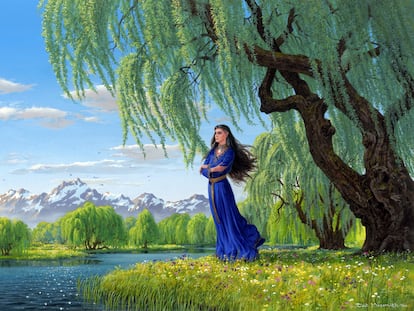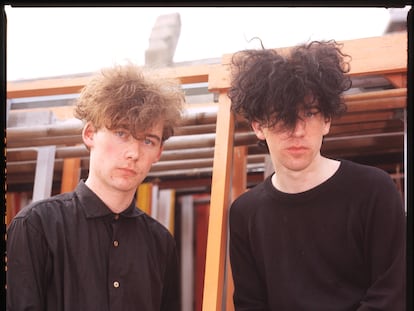Terence Trent D’Arby’s downfall: How the singer tipped to be ‘the new Prince’ fell from grace
Forty years after starting his career, the artist — who changed his name to Sananda Maitreya — continues to release albums and give concerts, but he has never regained his superstar status
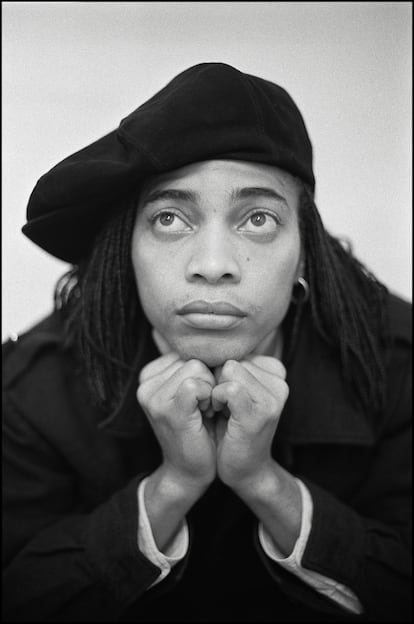
On February 28, 1987, the cover of the British magazine New Musical Express featured a striking image of a young Black man gazing intently at the camera, accompanied by the headline “The New Prince of Pop: Terence Trent D’Arby.” The then-unknown musician had just released his debut single, If You Let Me Stay, and interest was steadily growing. When his album, Introducing The Hardline According to Terence Trent D’Arby, was released in July, it sold a million copies within its first three days and reached number one in the U.K., remaining there for nine consecutive weeks. He went on to sell eight million records worldwide, win a Grammy for Best Male Vocalist, and garner critical acclaim. There was unusual consensus about his comparison to the pop icon Prince.
“In my opinion, Terence Trent D’Arby was the best new artist of the second half of the eighties,” explains JuanP Holguera, a music critic who writes for Rockdelux. “His voice was a force of nature, but he was also a complete musician on all levels. He composed, arranged and played almost all instruments, and he did everything well. Prince was a genius, but Terence Trent D’Arby was no slouch. And he sang better. I can’t think of any other artist from that era who had as much potential.”
He also had a compelling story to tell — so novelistic that one might reasonably question its veracity. Born in New York in 1962 as Terence Trent Howard, he was the son of a gospel singer, while his biological father remained anonymous, reportedly because he was a married man. Little Terence was considered an unwanted child, and his mother often reminded him that all her love was reserved for Jesus Christ, and he was secondary. He adopted the surname D’Arby (adding an apostrophe for a touch of nobility) from his stepfather, a pastor of the Pentecostal Church, who imposed strict discipline on him.
“I hate all that religious stuff. When I was little, I secretly listened to any kind of music that had nothing to do with gospel. It was like an escape route, a personal rebellion,” the musician told EL PAÍS during his first visit to Spain in 1987.
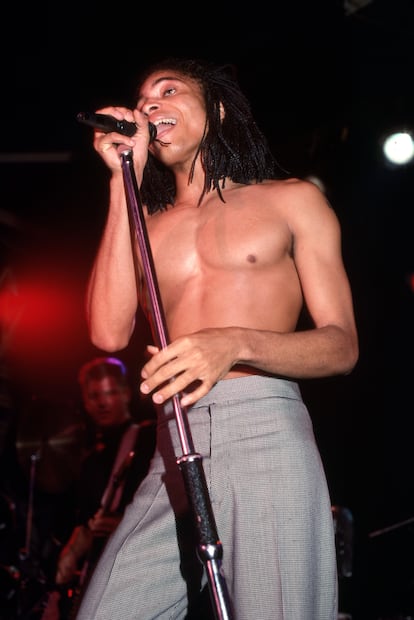
The family moved to Florida, where he took up boxing. At 17, he won the state championship and later joined the army. He was stationed in Frankfurt, Germany, but was eventually expelled for being absent without leave. Instead of adhering to military discipline, he chose to rehearse with The Touch, the local band where he had begun singing. They released an album in 1984 titled Love On Time.
Two years later, he settled in London, where he immersed himself in the music scene and secured a recording contract with CBS. During this time, he also began to cultivate his personal brand. Unabashedly, he declared that his debut album was the most important since The Beatles’ Sgt. Pepper’s Lonely Hearts Club Band. “I think I’m a genius. When I face an interview, I say what I feel. I worked as a journalist for a while, so I understand the mechanisms that govern the pop world: the same poses, the same questions, the same answers; clichés upon clichés. It’s terribly boring,” he told EL PAÍS.
D’Arby was not only a musical talent, but also a physical beauty and magnetic presence. His producer and industry discoverer, Martyn Ware (who had played with the techno-pop band The Human League and had launched Tina Turner’s career in the 1980s) told The New Statesman that his protégé “was the world’s most beautiful man. I used to walk around Soho with him and women would literally stop and stare — he looked like a god because he’s got that boxer’s body, and he was a bit androgynous, too. Even the men fancied him.”
In Ware’s view, there came a time when D’Arby’s skill in manipulating public opinion began to take its toll. “He created this monster,” he says. “It started off as a giggle, an ironic thing. He understood the business of star-building, and he became his own experiment. Then he fell out with journalists who were extremely eager to pull him down.”
In one such dialectical boxing match, an interviewer asked him what he would do if his next album wasn’t as successful as his first. “That’s like asking me what I would do if my dick fell off,” he replied.
The fall was harder
On October 23, 1989, D’Arby released his long-awaited second album, with an even more pompous title than the first: Neither Fish Nor Flesh. A Soundtrack of Love, Faith, Hope and Destruction. It was a huge flop: it only lasted four weeks on the British charts, selling barely 100,000 copies. The critics also panned it, although it divided opinions.
“Neither Fish Nor Flesh is my favorite album of his,” says JuanP Holguera. “I think it was a flop not because it was a bad work, but because it sounded too ambitious. What’s more, it required from the listener a predisposition and attention that perhaps the first one did not. I don’t think he lost his charm, but he overstepped the mark.”

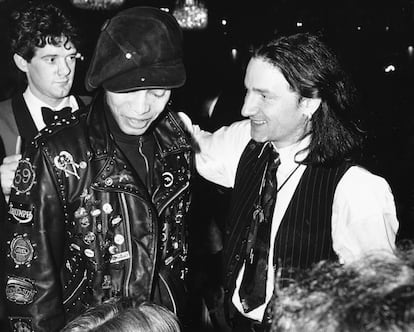
D’Arby himself has stated more than once that the album’s failure was what killed him. At 27 years old, he felt he had joined the infamous club of Jim Morrison, Janis Joplin, Jimi Hendrix, and others, although those reflections came much later. In his autobiographical account at the time, he leaned more toward resilience: “I am paying the price for wanting to climb very high. I am paying for everything I said, and I try not to feel any bitterness. I do not regret how the press treated me; that was the game, and I have to accept losing,” he told EL PAÍS in 1993.
The artist then released a third album, Symphony Or Damn, which gave him a slight resurgence in popularity, featuring hit singles such as Delicate and Let Her Down Easy” (the latter later covered by George Michael). With Vibrator (1995), he concluded his contract with Sony, and after recording an album that never saw the light of day, he ended the millennium by performing as the vocalist for INXS at the inauguration of the Olympic Stadium in Sydney. This collaboration made more sense than it might seem: D’Arby and Michael Hutchence — the leader of the Australian band who died in 1997 — were friends and had even had the same girlfriend, television presenter Paula Yates. That performance in Sydney marked the last public appearance of the artist formerly known as Terence Trent D’Arby.
The strange transformation
“Terence Trent D’Arby was dead... he watched his suffering as he died a noble death. After intense pain I meditated for a new spirit, a new will, a new identity.” That’s what the singer said when he first introduced himself as Sananda Maitreya in October 2001.
The name change not due to a religious transformation — as in the cases of Cassius Clay or Cat Stevens — but rather a result of a series of lucid dreams that he claimed to have experienced years earlier. “Sananda Francesco Maitreya was born from the smouldering ashes of a former artists heart who had undergone severe trauma, lost his will and prayed devotedly to his creator to restore him to a new life,” he wrote on his website. “After much meditation, in 1995, at the age of 33, earth years, his prayers were answered and he was given a new consciousness. The name given to this consciousness was Sananda which means ‘one who walks with light,’ Maitreya which means ‘among the sons of God.’ He presents his music as post millenium rock because he feels that it is more inclusive and representative of the vision his spirit inspires him to share.”
In the few interviews he has given since then, his comments have become, shall we say, even harder to take seriously than before. In 2017, British journalist Paul Lester suggested in The Guardian that he was unsure whether Maitreya had constructed his own metanarrative to maintain his sanity or to rationalize his decline without implicating himself artistically. Nevertheless, the singer stood by his words, essentially explaining his failure through a conspiracy theory: he claimed that the bigwigs in the music industry conspired to oust him because he posed a dangerous threat to Michael Jackson and other pop icons of the day.
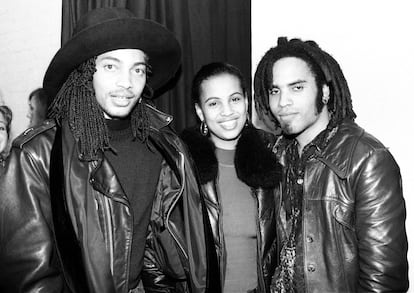
“I happen to know there were a couple of people in very, very high places in the establishment who, like Zeus, were kind of amused at my little routine,” he told The Guardian. “And it was working. Everybody was cashing in and happy as fuck. But behind his back, more and more A-list stars were complaining about the attention he was getting. The other gods on Olympus were sending their managers to ask: ‘What’s going on?’ The establishment had to do something about it because it couldn’t have all the gods angry.”
When she interviewed him for The New Statesman in 2015, journalist Kate Mossman revealed that her press agent had instructed her not to mention Terence Trent D’Arby’s name, as it was a painful topic for him. Additionally, she was advised against making comparisons to Prince, which were common not only because of the similar musical styles but also due to the name change and his unconventional approach to the industry. During that conversation, he shared one of his most talked-about stories for the first time. According to him, on the night of December 8, 1980, he dreamed of meeting John Lennon on a street in New York, where he extended his hand and felt as if he were walking inside Lennon. Upon waking, he learned that Lennon had been murdered. “From the age of 18 onwards, I had a different confidence about what was meant to happen to my life. I can only say this with all relative humility: I saw myself as a Beatle.”
Since changing his name, the artist — now based in Milan and married to Italian architect and TV presenter Francesca Francone — has been more prolific than ever, although few have noticed. Sananda Maitreya has released nine studio albums and four live albums. However, tracking this body of work can be challenging, as he began distributing it in chapters on his website. His albums are lengthy conceptual pieces that delve into fantastical or pseudo-mythological themes, featuring titles such as Angels & Vampires, The Rise of the Zugrebian Time Lords, and his latest release from this year, The Pegasus Project: Pegasus & The Swan.
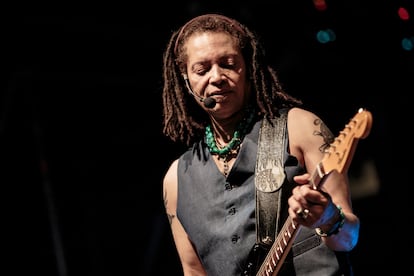
JuanP Holguera has listened to Sananda Maitreya’s recent albums and is a fan: “He has continued to release music that is not only significant but genuinely good. In a gesture that could earn a place on a hypothetical list of ‘How to Ruin Your Recording Career,’ he made the decision to change his stage name while still being known worldwide. He also relocated to Italy, which is not exactly a hub for the music scene. But despite the impact of these changes, I think his works are very valuable. His latest album is a marvel.”
Meanwhile, Martyn Ware claims that Maitreya’s voice is better than ever and suggests that the only issue is his need for an editor to guide him. Holguera speculates that perhaps, due to his struggles with the industry, the artist chose to step back and operate on his own terms to find greater happiness. He may have needed to “kill” Terence Trent D’Arby to continue living.
When The Guardian asked him if he missed being on Olympus, Sananda Maitreya replied, “Do I miss being on the mountain? [Where] one of my colleagues survived? ” Ultimately, he emerged victorious over musical icons like Michael Jackson, Prince, George Michael, Michael Hutchence, and Whitney Houston. D’Arby, or Maitreya, is still here.
Sign up for our weekly newsletter to get more English-language news coverage from EL PAÍS USA Edition
Tu suscripción se está usando en otro dispositivo
¿Quieres añadir otro usuario a tu suscripción?
Si continúas leyendo en este dispositivo, no se podrá leer en el otro.
FlechaTu suscripción se está usando en otro dispositivo y solo puedes acceder a EL PAÍS desde un dispositivo a la vez.
Si quieres compartir tu cuenta, cambia tu suscripción a la modalidad Premium, así podrás añadir otro usuario. Cada uno accederá con su propia cuenta de email, lo que os permitirá personalizar vuestra experiencia en EL PAÍS.
¿Tienes una suscripción de empresa? Accede aquí para contratar más cuentas.
En el caso de no saber quién está usando tu cuenta, te recomendamos cambiar tu contraseña aquí.
Si decides continuar compartiendo tu cuenta, este mensaje se mostrará en tu dispositivo y en el de la otra persona que está usando tu cuenta de forma indefinida, afectando a tu experiencia de lectura. Puedes consultar aquí los términos y condiciones de la suscripción digital.
More information
Archived In
Últimas noticias
Maduro to be tried in the US for narcoterrorism and corruption
Maps of the US attack on Venezuela: Targets, airspace and deployed fleet
Venezuelans in exile: ‘This could be the end of a very dark chapter for Venezuela, but also the beginning of a time of uncertainty’
Key points of the military attack on Venezuela: Early morning bombings and a ‘captured’ president
Most viewed
- Alain Aspect, Nobel laureate in physics: ‘Einstein was so smart that he would have had to recognize quantum entanglement’
- David King, chemist: ‘There are scientists studying how to cool the planet; nobody should stop these experiments from happening’
- Mexico completes its trade shift with the entry into force of tariffs on China and countries without trade agreements
- Reinhard Genzel, Nobel laureate in physics: ‘One-minute videos will never give you the truth’
- Oona Chaplin: ‘I told James Cameron that I was living in a treehouse and starting a permaculture project with a friend’
